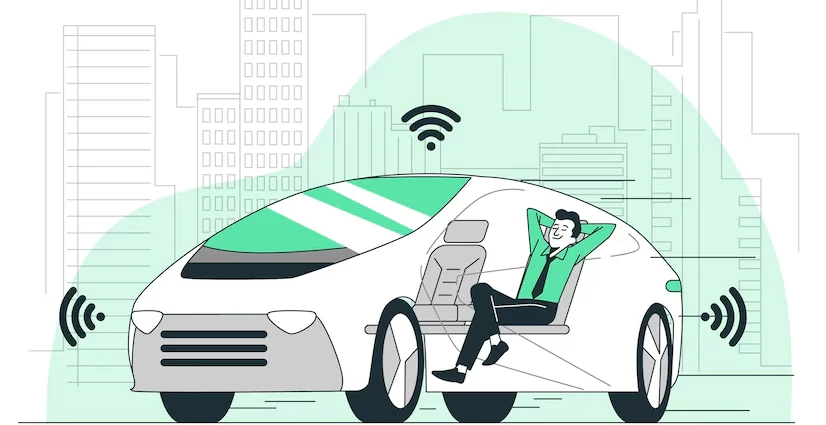Self-Driving Cars: Where Are We Now?
- 1 The Evolution of Self-Driving Technology
- 2 Key Players and Their Contributions
- 3 Technological Milestones and Challenges
- 3.1 Sensing and Perception
- 3.2 Decision-Making and Control
- 3.3 Regulatory and Legal Framework
- 3.4 Liability and Insurance
- 3.5 Ethical Considerations
- 4 Current Deployments and Real-World Testing
- 5 The Road Ahead
- 6 Conclusion
In recent years, the advent of self-driving cars has emerged as one of the most transformative advancements in technology and transportation. This cutting-edge innovation promises to revolutionize how we commute, potentially improving road safety, reducing traffic congestion, and increasing mobility for those unable to drive. Despite significant progress, the journey toward fully autonomous vehicles is complex and laden with technological, regulatory, and ethical challenges. This article delves into the current scenario of self-driving cars, exploring their development, the hurdles they face, and the implications for the future.
The Evolution of Self-Driving Technology
Self-driving cars, also known as autonomous vehicles (AVs), rely on sensors, cameras, radar, LIDAR (Light Detection and Ranging), and sophisticated algorithms to navigate roads and make real-time decisions. The concept of autonomous driving has existed for decades, with early prototypes dating back to the 1980s. However, significant advancements have been made in the last decade, driven by technological progress and substantial investments from tech giants and automotive companies.
Key Players and Their Contributions
Several companies have taken the lead in the development of self-driving technology:
- Waymo: Originally a Google project, Waymo has been at the forefront of autonomous driving technology. It launched its first commercial self-driving world service in Phoenix, Arizona, showcasing its advanced capabilities.
- Tesla: Known for its electric vehicles, Tesla has incorporated advanced driver-assistance systems (ADAS), branded as Autopilot and Full Self-Driving (FSD). Tesla’s approach relies heavily on camTesla’sd neural networks.
- Uber and Lyft: Ride-sharing giants have invested heavily in research on autonomous vehicles. Uber sold its AV division to Aurora Innovation in 2020, while Lyft continues its partnership with companies like Waymo.
- Traditional Automakers: Companies like General Motors (with its Cruise division), Ford, and Toyota are investing billions in developing self-driving technology, often through partnerships and acquisitions of tech startups.
Technological Milestones and Challenges
The development of self-driving cars involves several stages, often categorized by the Society of Automotive Engineers (SAE) into six levels of automation, from Level 0 (no automation) to Level 5 (full automation). Most current self-driving systems operate at Level 2 or 3, where the vehicle can handle specific driving tasks but still requires human supervision.
Sensing and Perception
A self-driving car’s ability to perceive its environment is crucial. LIDAR provides high-resolution, three-dimensional maps of surroundings, while radar and cameras detect objects, pedestrians, and road signs. Integrating these inputs into a coherent understanding of the environment remains a technical challenge. Despite advancements, issues like sensor fusion, where data from different sensors are combined, and reliability in diverse weather conditions continue to pose significant hurdles.
Decision-Making and Control
Once the environment is perceived, the vehicle must make decisions about its actions—navigating traffic, obeying traffic signals, and ensuring passenger safety. This requires sophisticated algorithms and artificial intelligence. Machine learning models and intense learning are crucial in enabling these decision-making processes. However, ensuring these models can handle the vast array of unpredictable scenarios encountered on real roads is an ongoing challenge.
Regulatory and Legal Framework
The regulatory landscape for self-driving cars is evolving but remains fragmented. Different countries and even states within countries have varying regulations. Federal guidelines from bodies like the National Highway Traffic Safety Administration (NHTSA) coexist with state-specific laws in the United States. The EU has been proactive in Europe, but individual countries maintain their regulations. Harmonizing these rules is essential for the widespread adoption of autonomous vehicles.
Liability and Insurance
One of the most contentious issues is determining liability in a self-driving car accident. Traditional insurance models are based on driver fault, but with autonomous vehicles, the responsibility could shift to manufacturers or software developers. This necessitates new insurance frameworks and legal definitions.
Ethical Considerations
Self-driving cars also raise profound ethical questions. For instance, how should an autonomous vehicle decide between minimizing harm to its passengers versus pedestrians in an unavoidable accident scenario? These “trolley problem” scenarios are not ju”t theoretical b”t require concrete programming decisions, making ethics a core component of autonomous vehicle development.
Current Deployments and Real-World Testing
Despite the challenges, self-driving cars are already being tested and deployed in limited capacities:
- Waymo One: Waymo’s commercial ride-hailing service operates fully autonomous vehicles without safety drivers in some areas, offering a glimpse into a driverless future.
- Pilot Programs: Companies like Cruise, Argo AI, and Zoox conduct extensive real-world tests in various cities, collecting valuable data to refine their systems.
- Tesla: Tesla’s Autopilot and FSD features are used by Tesla, though they require driver supervision and have faced scrutiny over safety concerns and misleading marketing.
The Road Ahead
The future of self-driving cars is promising but uncertain. Achieving Level 5 autonomy, where vehicles can operate under all conditions without human intervention, remains a distant goal. However, incremental technological improvements, regulatory progress, and societal acceptance will pave the way for broader adoption.
Potential Benefits
- Safety: Autonomous vehicles have the potential to reduce traffic accidents significantly, most of which are caused by human error.
- Efficiency: Self-driving cars can optimize traffic flow and reduce congestion, leading to lower emissions and fuel consumption.
- Accessibility: Autonomous vehicles can provide mobility solutions for the elderly, disabled, and others who cannot drive.
Potential Drawbacks
- Job Displacement: The widespread adoption of self-driving cars could lead to job losses in driving-related professions.
- Privacy Concerns: The data collected by autonomous vehicles raises privacy issues, requiring stringent data protection measures.
- Infrastructure Needs: Autonomous vehicles may require significant changes to road infrastructure, including intelligent traffic signals and dedicated lanes.
Conclusion
The journey toward fully autonomous vehicles is akin to a marathon rather than a sprint. While significant strides have been made, numerous technological, regulatory, and ethical challenges remain. The current scenario reflects a burgeoning industry with immense potential to transform transportation. As we navigate this complex landscape, collaboration among tech companies, automakers, regulators, and society will be crucial to realizing the vision of a safer, more efficient, and accessible future on the roads.
















